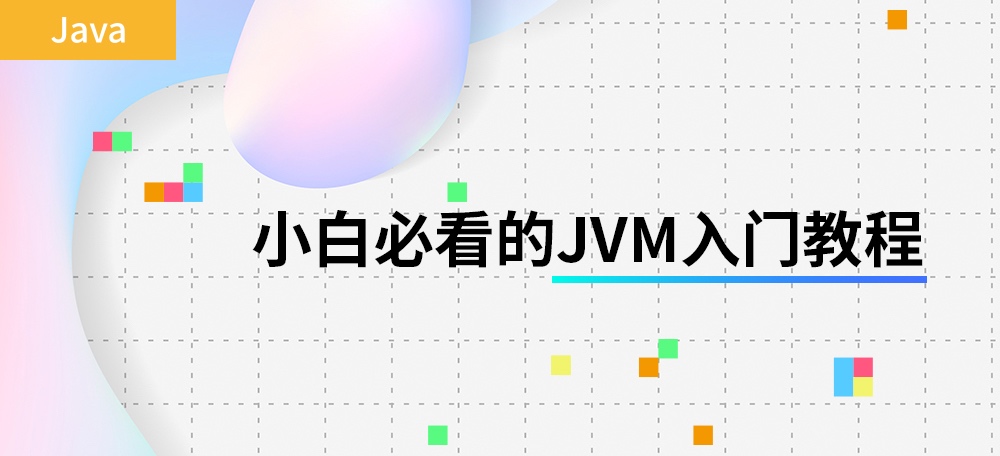【全网首发】从源码角度分析一次诡异的类被加载问题原创
最近有同学在做 APM 链路监控发现了一个诡异的类被加载的问题,没有被调用到的函数里面用到的类,居然触发了类加载,于是结合 JVM 的源码做了一下分析,过程如下:
现象描述
简化后有如下几个类,其中 IParent 是一个抽象类,ChildImpl 是 IParent 的子类,TestB 类有一个 test 方法,入参为 IParent,TestA 有两个静态方法,一个 foo,一个 test,其中 test 方法中新建了一个 ChildImpl 作为入参调用了 testB 的 test 方法。
public abstract class IParent {
}
public class ChildImpl extends IParent {
static {
System.out.println("init child impl");
}
}
public class TestB {
public void test(IParent obj) {
System.out.println(obj);
}
}
public class TestA {
public static void test() {
TestB testB = new TestB();
testB.test(new ChildImpl());
}
public static void foo() {
System.out.println("in hello foo");
}
}
接下来是在 main 方法中调用 TestA 的 foo 方法
package me.ya;
public class Main {
public static void main(String[] args) {
TestA.foo();
}
}
那么问题是:
只调用 TestA 的 foo 方法,不调用 test 方法,会触发 IParent 和 ChildImpl 的类加载吗?
从 idea 的代码提示也可以确认 TestA 的 test 方法是没有人调用的。
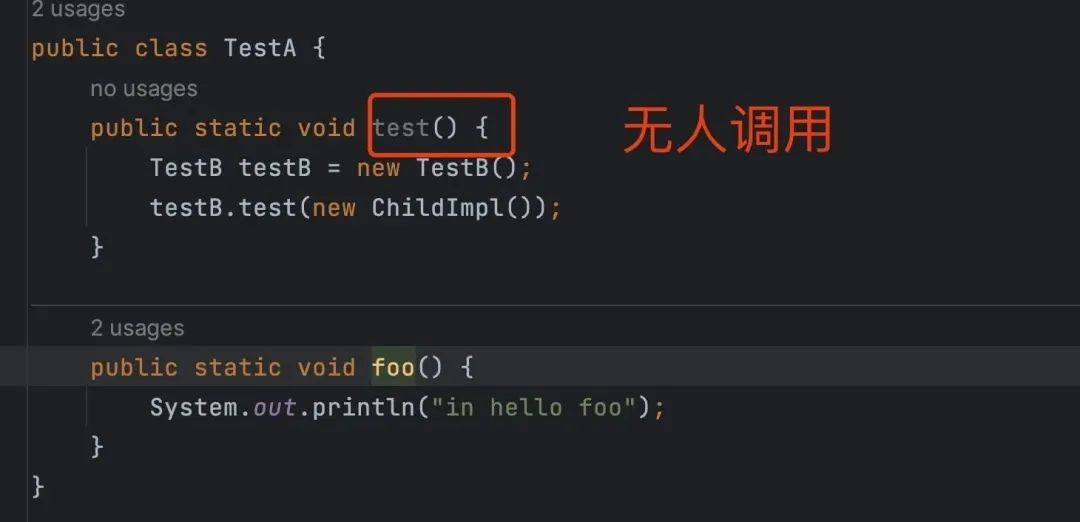
通过 jvm 启动参数 -verbose:class 查看类加载的情况:

IParent 和 ChildImpl 这两个类居然被加载了。
如果我们把 testB 的 test 方法做一下修改,直接用 ChildImpl 作为函数参数,不存在多态继承的情况下,就不会对应类的加载。
public class MyChild {
}
public class TestB {
public void test(IParent obj) {
System.out.println(obj);
}
public void test_v2(ChildImpl obj) {
System.out.println(obj);
}
}
public class TestA {
public static void test() {
TestB testB = new TestB();
// testB.test(new ChildImpl());
testB.test_v2(new ChildImpl());
}
public static void foo() {
System.out.println("in hello foo");
}
}
这个时候不会触发 IParent 和 ChildImpl 的类加载。看到这里,可能有同学已经猜到了,是因为多态导致了对应的问题出现。接下来我们从 JVM 源码的角度看一下这个过程。
JVM 源码调试分析
通过简单的代码阅读,找到了一个比较理想的断点来分析这个问题,在函数VerificationType::is_reference_assignable_from 上打一个断点。
b VerificationType::is_reference_assignable_from
通过 bt 查看此函数的调用堆栈如下:

is_reference_assignable_from 就是检查一个类型 to (当前类型)是否可以被 from 类型赋值,逻辑很清晰:
首先判断 from 是否为 null,如果 from 为 null,则是合法的,null 可以赋值给任意对象引用和数组类型,比如
Foo to = null; // 合法
接下来判断 from 和 to 类型签名是否相同,如果是同一类型,则一定是合法的,比如:
Foo from = new Foo();
Foo to = from; // 合法
如果 to 类型是对象引用类型,则判断 from 和 to 是否有继承关系。首先判断一个特殊情况,如果 to 是 java.lang.Object 这个上帝类型,则一定是成功的。
Foo from = new Foo();
Object to = from; // 合法
如果 to 不是上帝类型,则需要加载 to 的对应类文件,以便获取更多的信息。
接下来判断 to 类型是不是接口类型,如果 to 是接口类型,则直接返回成功(why?)。
如果 to 类型不是接口类型,则需要把 from 类型的类文件也加载进来,判断 from 类型是不是 to 的子类型。
public class Bar extends Foo {
}
Bar from = new Bar();
Foo to = from; // 合法
完整的代码如下:
bool VerificationType::is_reference_assignable_from(
const VerificationType& from, ClassVerifier* context,
bool from_field_is_protected, TRAPS) const {
instanceKlassHandle klass = context->current_class();
if (from.is_null()) { // 如果 from 为 null,则合法(null 可以复制给任意对象和数组类型)
// null is assignable to any reference
return true;
} else if (is_null()) {
return false;
} else if (name() == from.name()) { // 如果 from 和 to 是同一类型,则也合法
return true;
} else if (is_object()) { // 对象引用类型
// 如果 to 是一个对象类型,则需要检查 from 和 to 类型是否有继承关系
if (name() == vmSymbols::java_lang_Object()) {
// 如果 to 为 java.lang.Object 类型,则也是合法
return true;
}
// 加载 to 类型的 class 文件以便获取更多的信息
Klass* obj = SystemDictionary::resolve_or_fail(
name(), Handle(THREAD, klass->class_loader()),
Handle(THREAD, klass->protection_domain()), true, CHECK_false);
KlassHandle this_class(THREAD, obj);
// 如果是接口类型,则认为合法(至于为什么,英文注释里有)
if (this_class->is_interface()) {
// We treat interfaces as java.lang.Object, including
// java.lang.Cloneable and java.io.Serializable
return true;
} else if (from.is_object()) { // 如果 from 是对象引用类型
// 则需要加载 from 类型的类文件
Klass* from_class = SystemDictionary::resolve_or_fail(
from.name(), Handle(THREAD, klass->class_loader()),
Handle(THREAD, klass->protection_domain()), true, CHECK_false);
// 判断 from 是否是 to 的子类型
bool result = InstanceKlass::cast(from_class)->is_subclass_of(this_class());
return result;
}
} else if (is_array() && from.is_array()) { // 判断数组的情况
VerificationType comp_this = get_component(context, CHECK_false);
VerificationType comp_from = from.get_component(context, CHECK_false);
if (!comp_this.is_bogus() && !comp_from.is_bogus()) {
return comp_this.is_assignable_from(comp_from, context,
from_field_is_protected, THREAD);
}
}
return false;
}
回到我们的例子中,通过 gdb 我们可以查看 from 和 to 类型。

可以看到 to 的类型为抽象类,me/ya/IParent,from 为实现类 me/ya/ChildImpl
接下来继续往下,通过判断 to 是一个对象类型,则加载 me/ya/IParent 类

接下来加载 me/ya/ChildImpl 类来判断 from 和 to 是否有父子类关系。
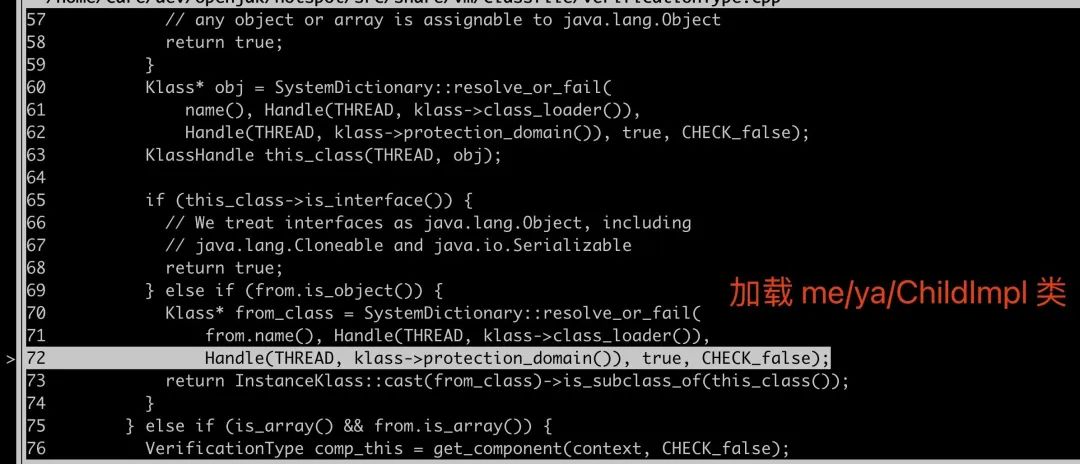
到这里就很清楚为什么函数没有被调用到,函数内用到的类竟然被加载了。
简单总结就是:TestB 类被加载的过程需要进行校验类文件的合法性,其中一项就是函数调用的参数赋值是否合法。涉及多态的情况,需要判断 from 是否是 to 的子类型(需要加载类文件)
继续尝试,如果 IParent 为接口类型
按照前面的代码逻辑,如果 IParent 为接口类型,代码中会直接判断为合法,不会触发 ChildImpl 类型的加载。
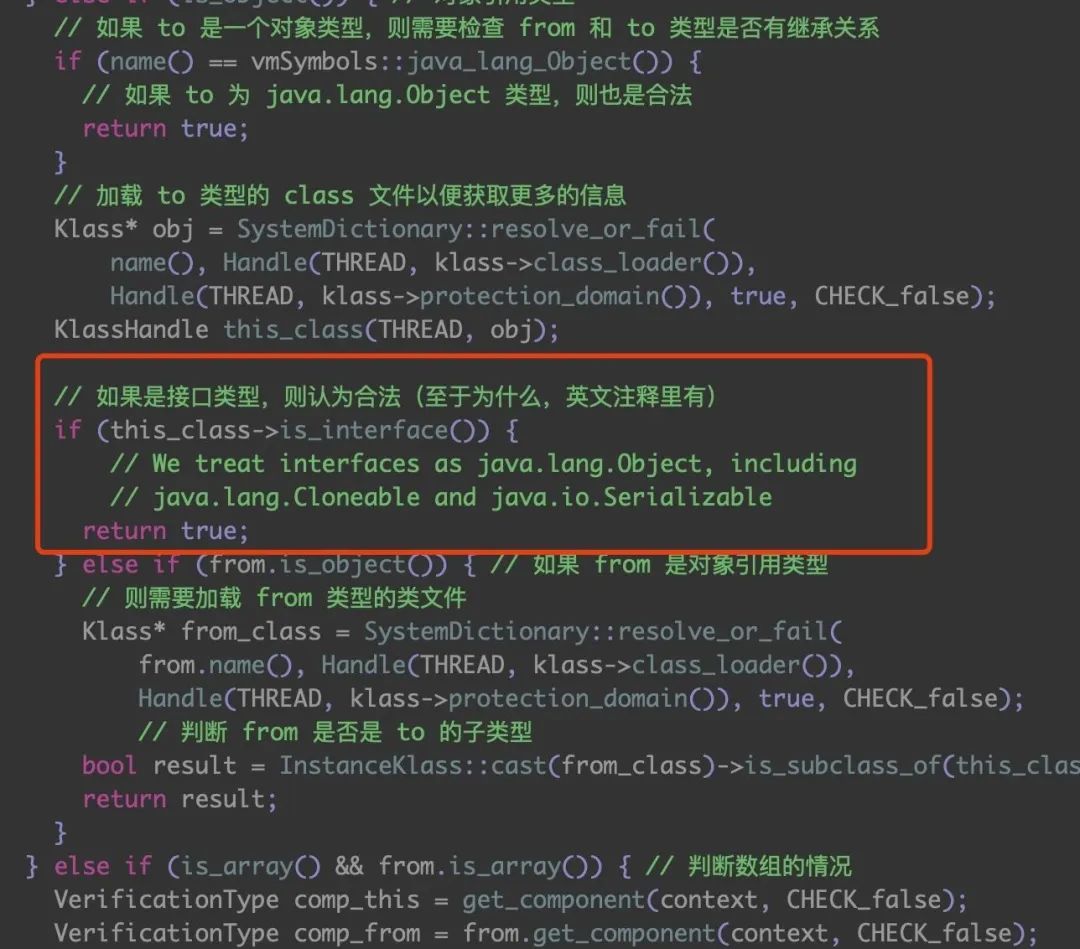
将 IParent 改为接口
public interface IParent {
}
public class ChildImpl implements IParent {
}
再次运行会发现,确实没有加载 ChildImpl 类。
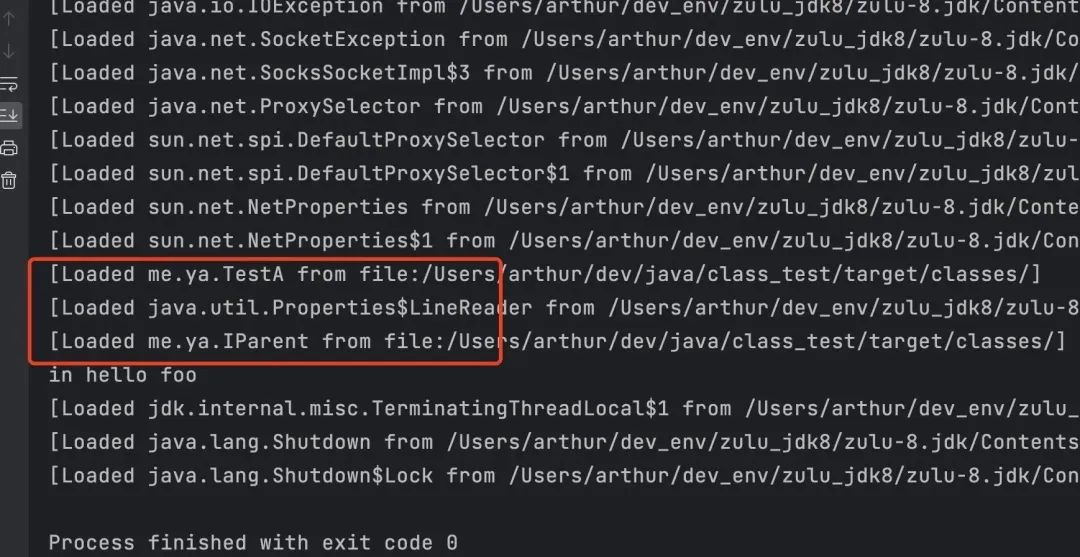
回到一开始的实验,如果不使用多态,直接用子类型 ChildImpl 作为函数参数类型时,不会触发 from 和 to 类型的加载
public void test_v2(ChildImpl obj) {
System.out.println(obj);
}
因为不存在多态,from 和 to 的类型一样不需要后续加载类文件来进一步判断,所以不会触发对应类型的加载。
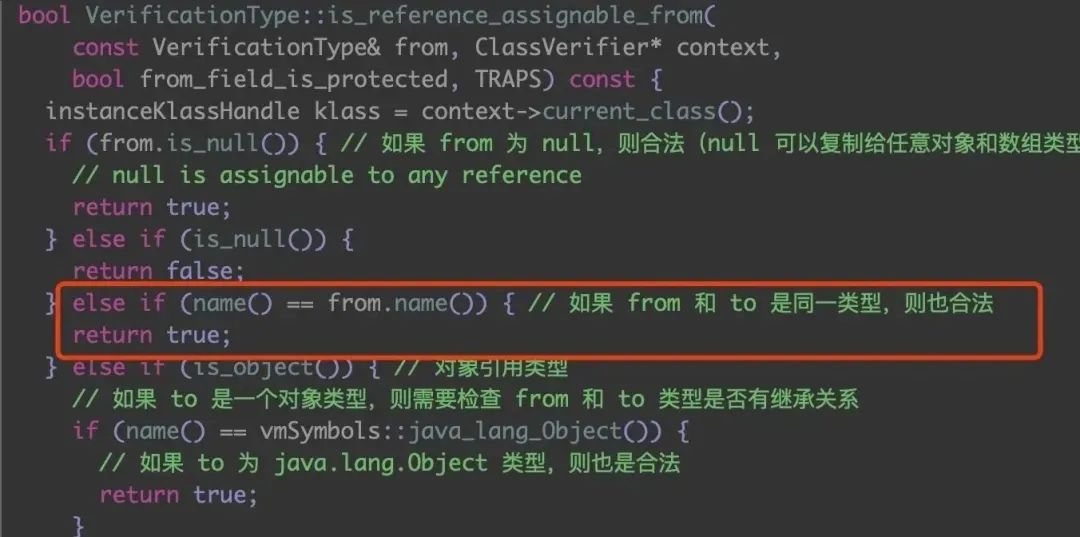
后记
调试是一个好东西,可以帮我们理解很多冷知识。

